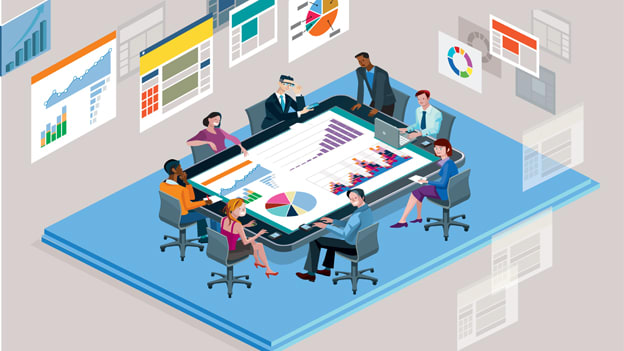Big Leaps vs. incremental changes: How to approach gender diversity

Occupying the top position (in almost all spheres of life) is still seen as a man’s craft. This is a fact, a truth, and a reality that we have failed to redress.
From the legally mandated appointment to boards to the Maternity Benefit (Amendment) Act, although there have been consistent efforts from the Indian government to elevate the inclusion of women at the workplace and provide increased benefits to women employees, we are still at a snail’s pace when it comes to identifying, cultivating, and managing the talent that women bring to organizations. Many term these legally mandated provisions as giant leaps; but are they really making a difference? Do we need more grassroot-level, incremental initiatives? Countries like Iceland, Norway, and Finland have already made exceptional progress in eliminating the gender gap. Iceland has legally mandated equal pay for equal work and has made it mandatory for companies to have 40 percent women on their boards. So, where are Indian organizations in terms of gender diversity? Who is assessing as to how we are moving ahead in this direction?
In The Future is HERe, a research paper by EY in partnership with Confederation of Indian Industry (CII) Indian Women Network (IWN), we gain an insight into the current maturity level of organizations and understand how the benefits of D&I can be optimized for all stakeholders. The research report reveals that “Despite a substantial increase in the number of women joining the workforce, gender parity continues to suffer. The ratio of educated women to working women in India raises concerns. Existing gender biases play a big role in holding women back.” 69 percent organizations don’t understand the financial benefits of diversity, there is unconscious bias, ineffective implementation of policies, fewer women in leadership roles, exclusion from informal networks and disparity in pay structures — are factors that have hindered the progress of D&I initiatives.
Diversity — a policy and not an organizational practice
Organizations struggle to create a gender-diverse working environment. The report divulges that 65 percent of organizations leverage diversity for recruitment and retention without having a well-rounded understanding of the benefits of gender diversity. And additionally, 50 percent of these simply leverage Employee Value Proposition (EVP) and their image for being diverse organizations to attract and retain women employees. This just shows that organizations merely adopt diversity as a policy and not as an organizational practice.
The report states: “Organizations are taking a piecemeal approach, often influenced by other leading global organizations within their sector to simply increase their gender numbers. This, in the long run, is unlikely to have any significant impact on these organizations’ business case.”
Aashish Kasad, Partner and India Region Diversity and Inclusion Leader, Ernst & Young LLP, India comments that “Defining a clear business case for D&I with budgets to effectively design and deploy policies, putting in place a D&I council and having a seat on the board for the D&I leader to weave diversity and inclusion in the strategic initiatives of the organization will assist in harnessing the benefits. D&I policy implementation is crucial and needs to be monitored by senior management to assess its efficacy. Organizations need to constantly work toward reducing unconscious bias in decision making. The tone at the top is also critical to driving the shift in mindset and commitment to D&I policies by the senior management of organizations.”
“What gets measured, gets managed”
The proverb “What gets measured, gets managed” is truly applicable in this scenario. Despite the piecemeal initiatives organizations have instituted, the measurement of D&I initiatives is absent. The report states that “Without making an assessment of their current gender numbers, an organization will be unable to create a significant impact on gender diversity and in return reap the benefits of having a diverse workforce.” The survey in the report states that 42 percent of the organizations are unable to attract and retain female talent; 21 percent organizations conduct gender audits; 37 percent do not conduct gender audits at all; 41 percent are not aware of any gender audits conducted; and 28 percent senior management responses said they were not aware of their gender diversity targets. With such numbers, the report recommends adopting and implementing regular Gender parity audits, Maintaining effective communication, Addressing unconscious bias, Effective D&I councils, Mentorship programs, Women leadership programs, and Women networking forums – these will not only move the needle on gender initiatives but also support the growth of the organizations by harnessing the benefits of diverse thoughts and ideas.
Gender inclusion is an issue that is not specific to a particular country or a region. It has a global relevance and significance. With the “war for talent” intensifying across the world, one-half of the talent pool is still compromised. This is the time for organizations to start incremental, grassroot level changes to augment gender inclusion and reap the benefits. As the report concludes, “Let us picture a world that does not associate itself with the concept of gender diversity, a world where we have progressed so much that we no longer need to be careful about exclusion because in its essence it is all-inclusive. A world where we do not see gender before making decisions within our organizations and socio-economic environments; gender blindness if you will. From this point on, we do not mention any gender; instead, we look to each other as individuals with unique abilities.”











